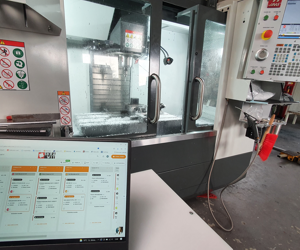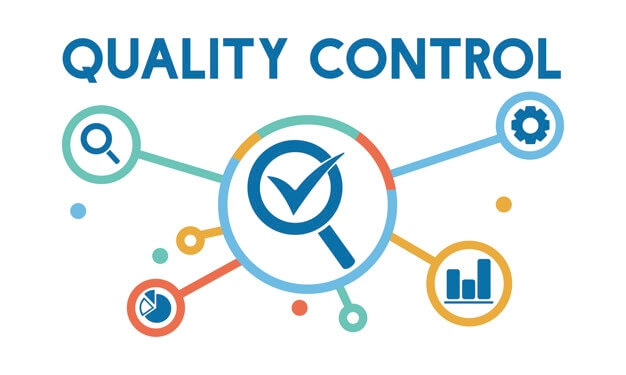As a manufacturer, you know how important for maximizing your production efficiency and meeting customer demands a smooth and orderly production line is. Still, even with a highly-detailed production plan and careful task scheduling, you might come across hiccups during the manufacturing process – often also called a bottleneck operation.
Are those a problem for your facility as well? This article should come in handy – we’ll explain in it where the bottlenecks come from and how you can spot and fix them.
What is a bottleneck operation?
Bottlenecks are any specific tasks or stages within your production line which slow down the entire production process, causing delays, missed deadlines, and financial losses for the facility. Even if your workers or machines work at their maximum throughput capacity, they simply can’t finish all the tasks they have in the scheduled time – and so the production falls behind.
The term “bottleneck” comes from the fact that since the neck is the narrowest part of the bottle, it’s the most likely spot where the liquid will get stuck, making it harder to pour it out of the bottle. But while you can quickly see what’s causing the problem in a sauce bottle, spotting bottlenecks in your manufacturing processes is a much more tricky task. Tricky to the point that every year, production delays and bottlenecks cause $12 trillion in losses for the global economy.
What can cause production bottlenecks?
The main problem with pinpointing a bottleneck operation is that they can take many forms – they can be caused by people, software, hardware, or even specific production tasks. And so manufacturers often have trouble figuring out what exactly causes the problem. They can see that their production is behind schedule and that there’s the risk they won’t keep the deadlines, but what caused the situation in the first place?
The culprits might be:
Equipment breakdowns
A sudden machine malfunction or breakdown usually means that all tasks on the faulty machine have to be rescheduled. If manufacturers can finish their work on another machine, then facility owners typically only need to adjust the production schedule to accommodate for the issue. If an essential part has broken down though, then the entire manufacturing process might have to be temporarily stopped until the machine is repaired or replaced.
Insufficient raw materials or supplies
If workers suddenly run out of raw materials or components they need to produce the items, the entire manufacturing process might be delayed or even stop altogether, until the workers receive the missing resources.
Not enough workers
Not enough staff assigned to the production process is actually one of the most common reasons why manufacturing tasks are going slowly. If there’s too much work but not enough staff to handle all tasks, then delays (or quality issues at later stages) are inevitable.
Inadequate production planning
The above two issues very often come from poor production planning and scheduling. If business owners can’t precisely estimate how many resources or employees they need for the tasks or don’t know how much time each task needs, then the production goals might turn out to be impossible to meet.
How can manufacturers find and fix their production bottlenecks?
So as you can see, there are multiple reasons why your production stages might not go as smoothly as you would like them to. And what makes spotting and solving a bottleneck operation even more difficult is that they can happen at any time and production stage.
There are a few clever ways in which you can pinpoint where exactly the problem lies – and then think about how you can solve it for good.
Analyze the production process
The very first thing you should do to pinpoint what exactly is clogging your production line is to run a thorough analysis of how your manufacturing line is working, from start to finish. The more data you gather, the easier it will be to see which elements of your production process are causing the most problems for your facility.
You should especially look closely at the:
- Average production tasks and cycle time
- Machine occupancy and idle time
- Amount of raw materials used during production
- Workers efficiency
- Supply chain efficiency, etc.
Using the data, you can then identify any tasks or operations that are regularly taking longer than expected and blocking the production line.
Ask your employees
Your shop floor staff and non-production employees can also give you plenty of ideas on what causes the problems on the production site. Are the scheduled dates unrealistic? Do they have to keep searching for resources because they never have as much as they need? Or maybe there’s endless confusion on the production site on who is doing what and which machines are occupied?
By listening to their issues, you can both quickly get to the bottom of the bottleneck issues but also make your staff feel more empowered, since they can have a say in how the production should be improved.
Implement continuous improvement methodologies
Using Lean manufacturing might also be a handy tool for you when it comes to overcoming production bottlenecks and improving overall production process efficiency. As those methodologies focus on performance and waste reduction (for example, by eliminating unnecessary steps or activities that do not add value to the final product), they can significantly boost the production flow, efficiency, and speed. And together with the enhanced manufacturing processes, you can reduce operational costs as well.
Moreover, lean practices emphasize continuous improvement, encouraging manufacturers to review and improve their processes on a regular basis.
To learn more about lean manufacturing, you can read our articles on 5s, Kaikaku, and JIT inventory management as they cover those topics in more depth.
Invest in automation and technology
Modern manufacturing platforms and technologies can also make a huge difference in increasing your workers’ productivity and reducing bottlenecks. For example, inventory management solutions with bar codes support can track how many raw materials or components you have in stock and send an alert whenever you are running low on those.
Plus, as the platform can also estimate how much materials you should have in stock to handle incoming orders, you can better plan the supplies purchases – and reduce your materials and inventory management costs as well.
How Manufacturing Execution Software can help manufacturers spot and solve the bottlenecks faster
Implementing Manufacturing Execution Software (MES) is another thing that could empower your facility and your staff.
The main purpose of those solutions is to give manufacturers real-time visibility and control over their entire production process by letting them monitor their manufacturing processes 24/7 across the entire shop floor (or several ones).
Thanks to this feature, business owners can spot places where production is slowing down or has stopped right as it happens and take immediate action.
Using MES to solve production bottlenecks – a practical example
Let’s say that you have implemented an MES platform Prodio to help you notice whenever one of the machines or equipment your workers are using is malfunctioning.
Here’s how the solution could help you:
Real-time Monitoring
Prodio will continuously monitor the progress of the production tasks, the time each task takes, and the performance of each machine in the production line. The entire information will then be put on your app’s dashboard, so you’ll always have the latest production information at your fingertips.
Data Analysis
Using the data it gathered, Prodio will analyze the collected data for any anomalies that could indicate a machine issue. For example, if one machine’s performance is much lower than during the previous manufacturing processes, it might be an early sign that the machine will break down soon.
Alert Generation
If the system does detect a potential problem, it will automatically send an alert or notification to the facility owner to inform them that one of the machines needs to be checked. Your shop floor staff can do the same thing by adding a comment to their current task about the equipment’s suspicious behavior – then the comment will be automatically visible to the entire shop floor.
Prompt action
After looking through the automated reports and graphs on Prodio’s dashboard, facility owners will know which exact machine is causing problems and so they can go and check the machines directly. Once they know what exactly is causing the machine to malfunction (like a broken part), they can quickly decide what to do next – for example, call a technician that will replace the broken part.
And if they need to update the production schedule to inform the staff workers that this specific machine is out of order, they can add the changes directly inside Prodio. The entire shop floor will then see that this one machine can’t be used, and so their schedule has been rearranged.
Sounds fantastic, doesn’t it? Do you want to see how Prodio could help you handle the bottlenecks in your own facility as well? Then, how about scheduling a demo presentation or testing our free 14-day trial? You can implement the platform in just a couple of minutes – and then leave it to Prodio to quickly report all potential production issues to you.
Conclusion
Finding and fixing a bottleneck operation before they cause delays and losses is still a challenge for many manufacturers. What if they had a helpful production assistant that would report all issues to them and recommend the best way to eliminate bottlenecks? Then optimizing the production schedules and boosting production capacity might actually become something manufacturers can enjoy – rather than dread.
Identifying bottleneck operation in manufacturing FAQ
What is bottleneck analysis in the manufacturing industry?
Bottleneck analysis is the process of identifying the areas or stages within the production system where the flow of work is limited, leading to reduced throughput and productivity. It helps manufacturers pinpoint the narrowest points in their operations and address them effectively.
How can manufacturers handle managing bottlenecks to improve productivity?
First, they need to carefully analyze their entire production process to pinpoint places where bottlenecks most often happen and think of the best way to solve those. For example, implementing Lean manufacturing methods to eliminate wasteful practices or automating some of their manufacturing stages might be a good way to improve overall productivity.
What are the major causes of bottlenecks in manufacturing?
The reason why a bottleneck operation might occur are varied – from high demand from customers, limited capacity and inefficient work stages to not enough skilled workers. So to find the real cause of the bottlenecks in their own facility, manufacturers need to thoroughly analyze and understand their processes.


 Marek Mrowiec
Marek Mrowiec 


 Magda Fic
Magda Fic